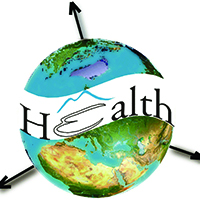COVID-19, air quality and space monitoring

All claims expressed in this article are solely those of the authors and do not necessarily represent those of their affiliated organizations, or those of the publisher, the editors and the reviewers. Any product that may be evaluated in this article or claim that may be made by its manufacturer is not guaranteed or endorsed by the publisher.
Authors
Due to the worldwide spread of the coronavirus disease 2019 (COVID-19), human mobility and economic activity have slowed down considerably since early 2020. A relatively high number of those infected develop serious pneumonia leading to progressive respiratory failure, system disease and often death. Apart from close human-to-human contact, the acceleration and global diffusion of this pandemic has been shown to be associated with changes in atmospheric chemistry and air pollution by microscopic particulate matter (PM). Breathing air with high concentrations of nitrogen dioxide and PM can result in over-expression of the angiotensin converting enzyme-2 (ACE-2) leading to stress of organs, such as heart and kidneys. Satellite monitoring can play a crucial role in spatio-temporal surveillance of the disease by producing data on pollution as proxy for industrial activity, transport and traffic circulation. Real-time monitoring of COVID-19 in air and chemical pollution of the atmospheric boundary layer available from Earth-observing satellites commuting with Health Information Systems (HIS) would be useful for decision makers involved with public health.
How to Cite

This work is licensed under a Creative Commons Attribution-NonCommercial 4.0 International License.








